Abstract
A quantitative investigation has been made of the antagonism by nalorphine of the analgesia and lenticular opacity produced in mice by a number of compounds. ED50 values have been obtained for each drug in the absence and in the presence of increasing doses of nalorphine, and from these, appropriate dose-ratios have been calculated. It has been possible to derive the equivalent of a pA2 value for each drug with nalorphine and, since these are almost identical, it may be concluded that all the drugs combine with similar receptors. Nalorphine antagonizes both actions by competing for the receptors. It was not possible to antagonize quantitatively the analgesic action of pethidine with nalorphine, although the lenticular effect could be abolished. The effect of nalorphine on the change in skin temperature in mice induced by some of the analgesic drugs was also investigated.
Full text
PDF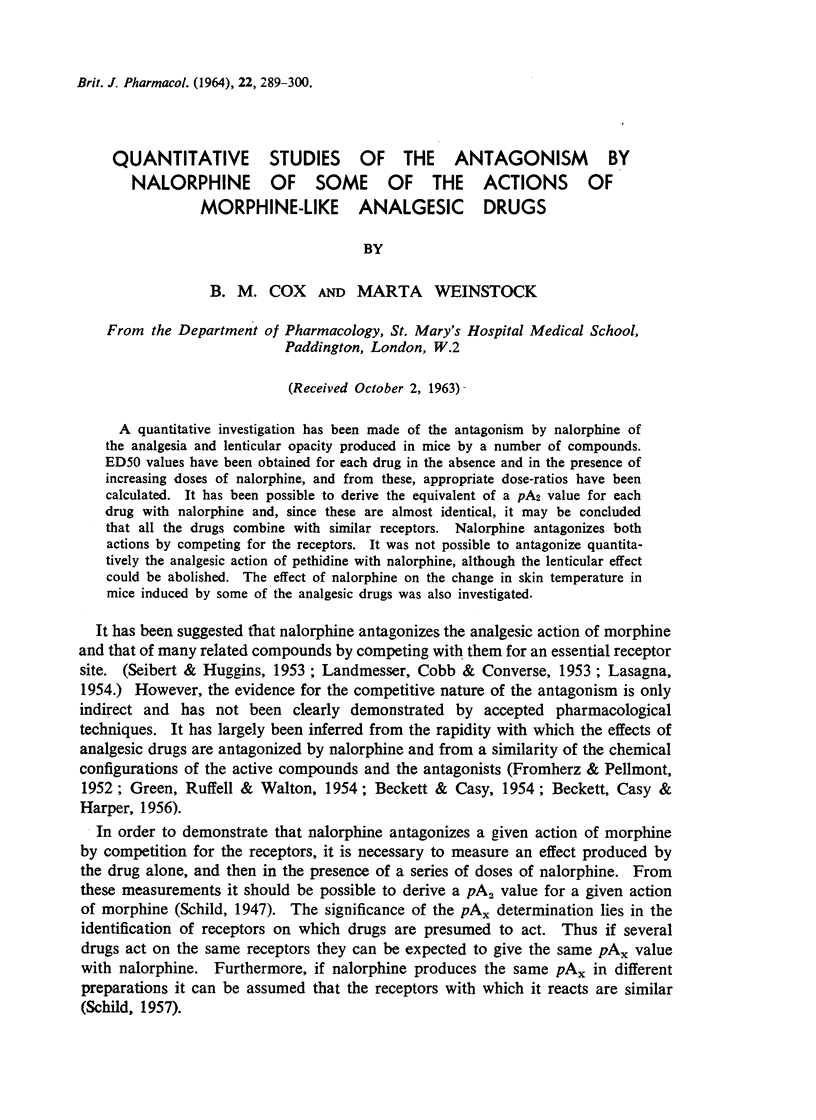
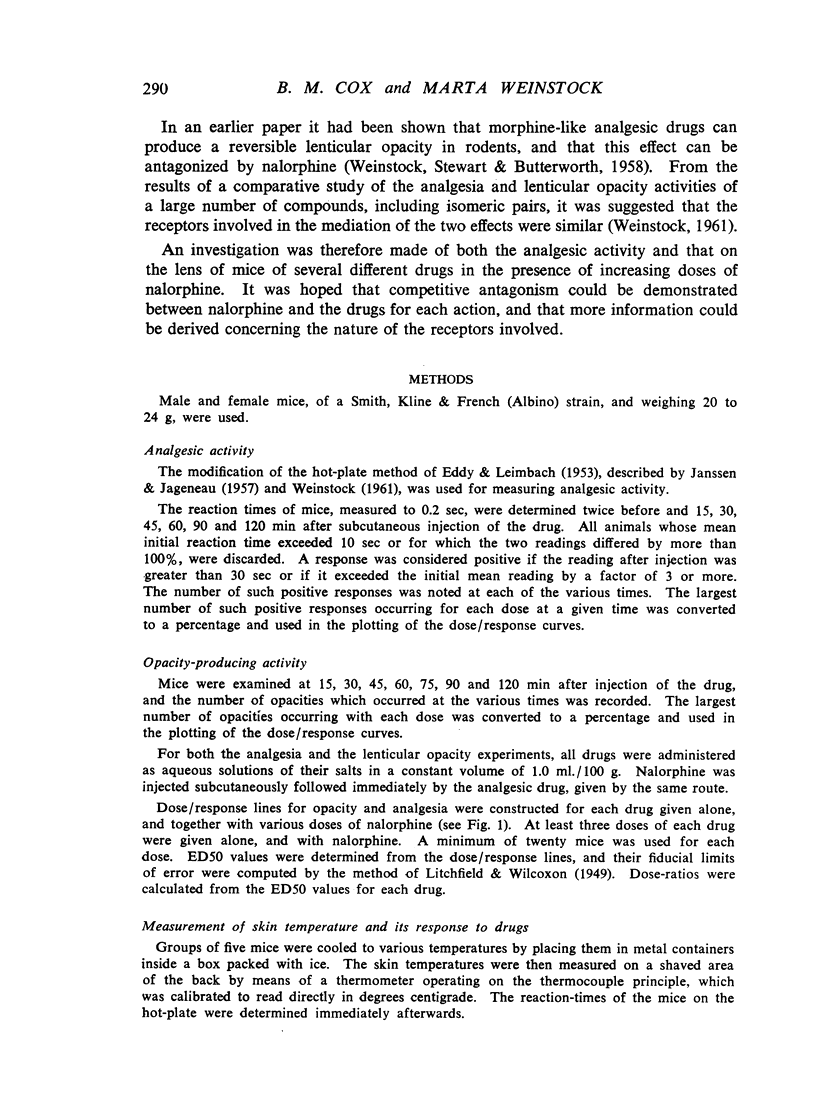


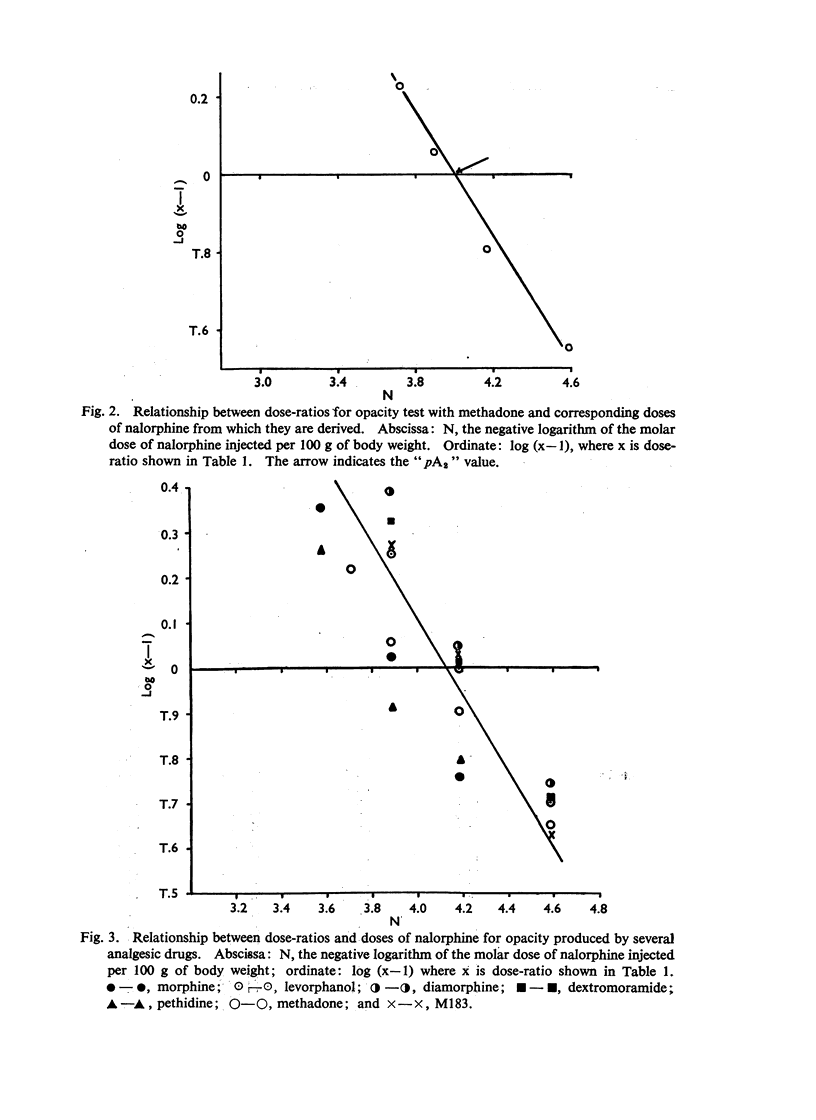
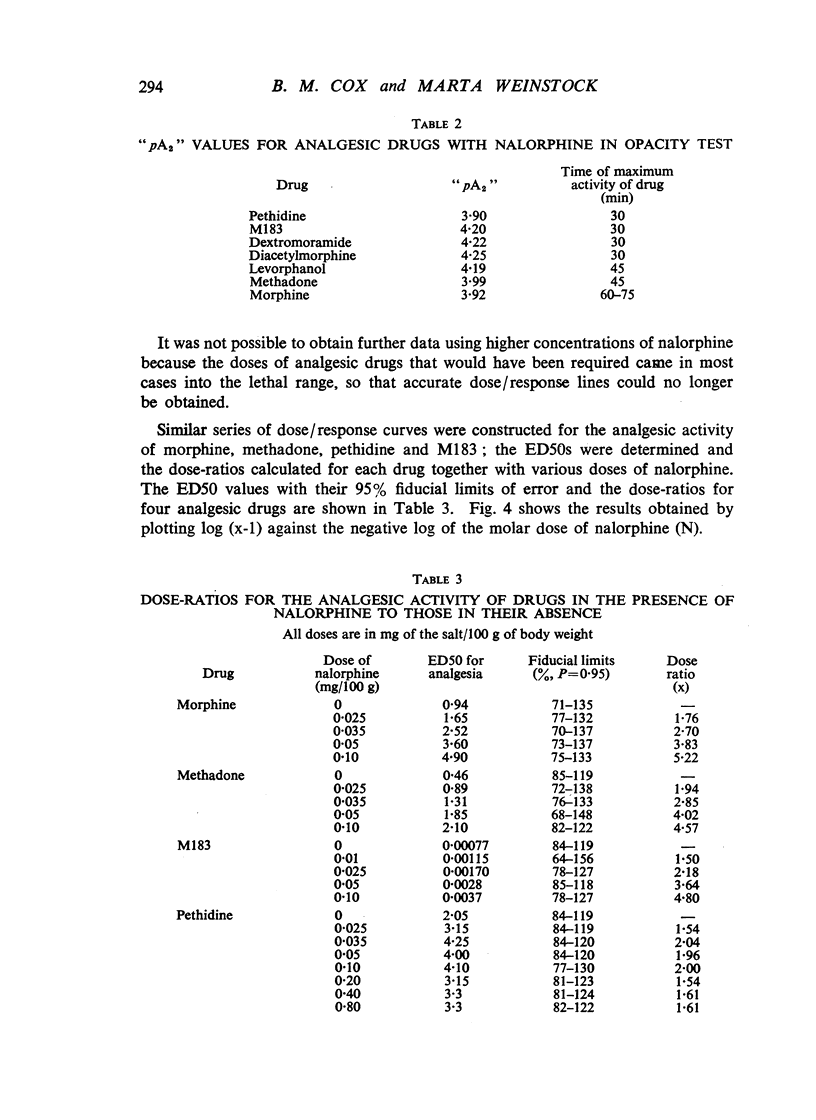
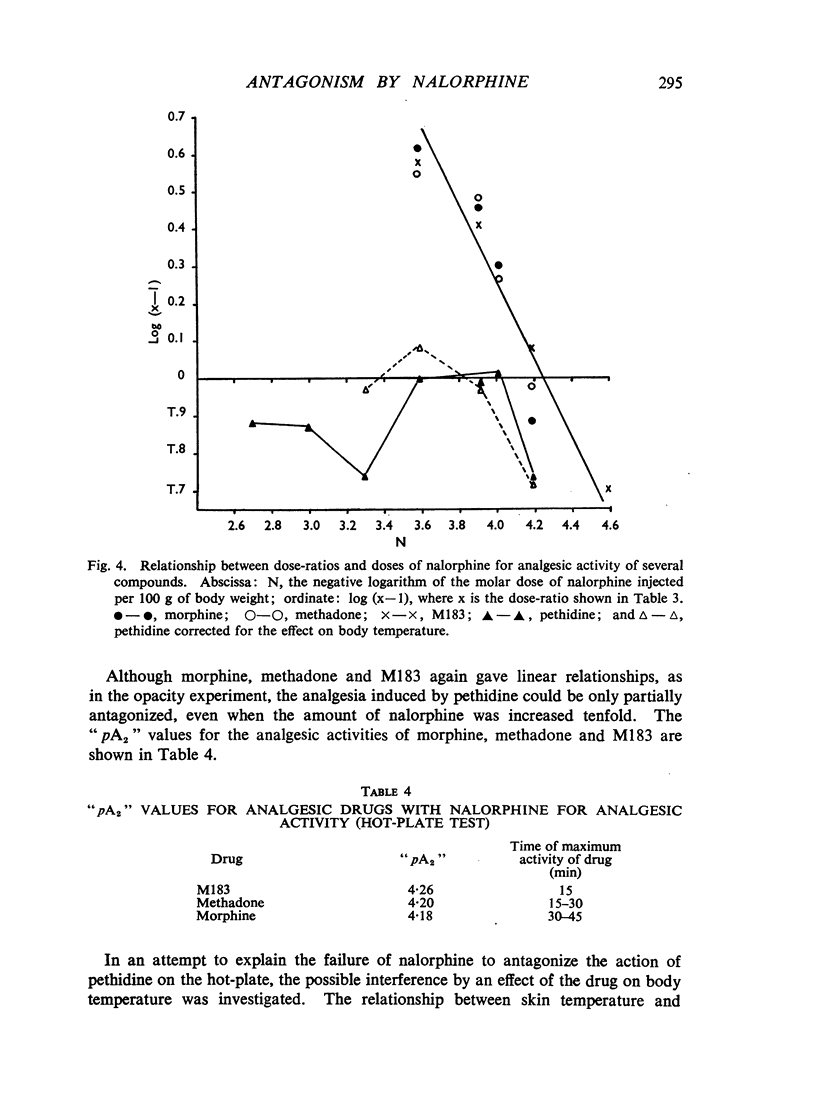
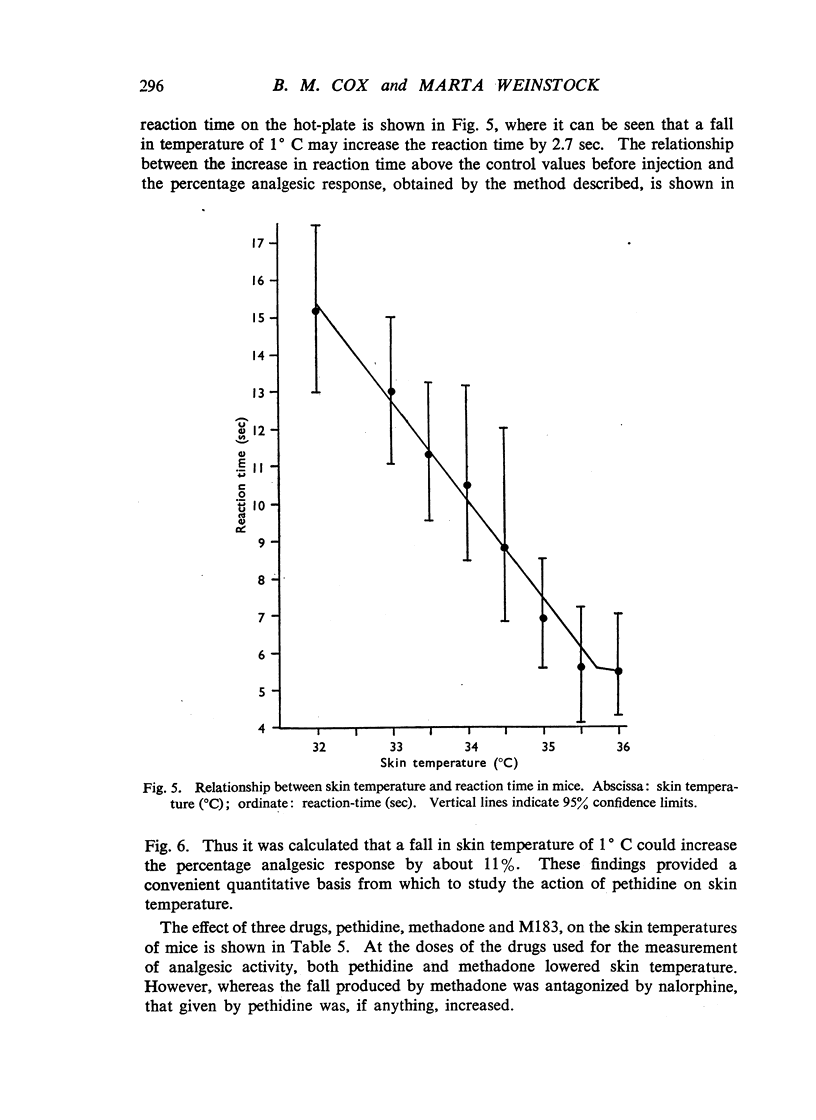

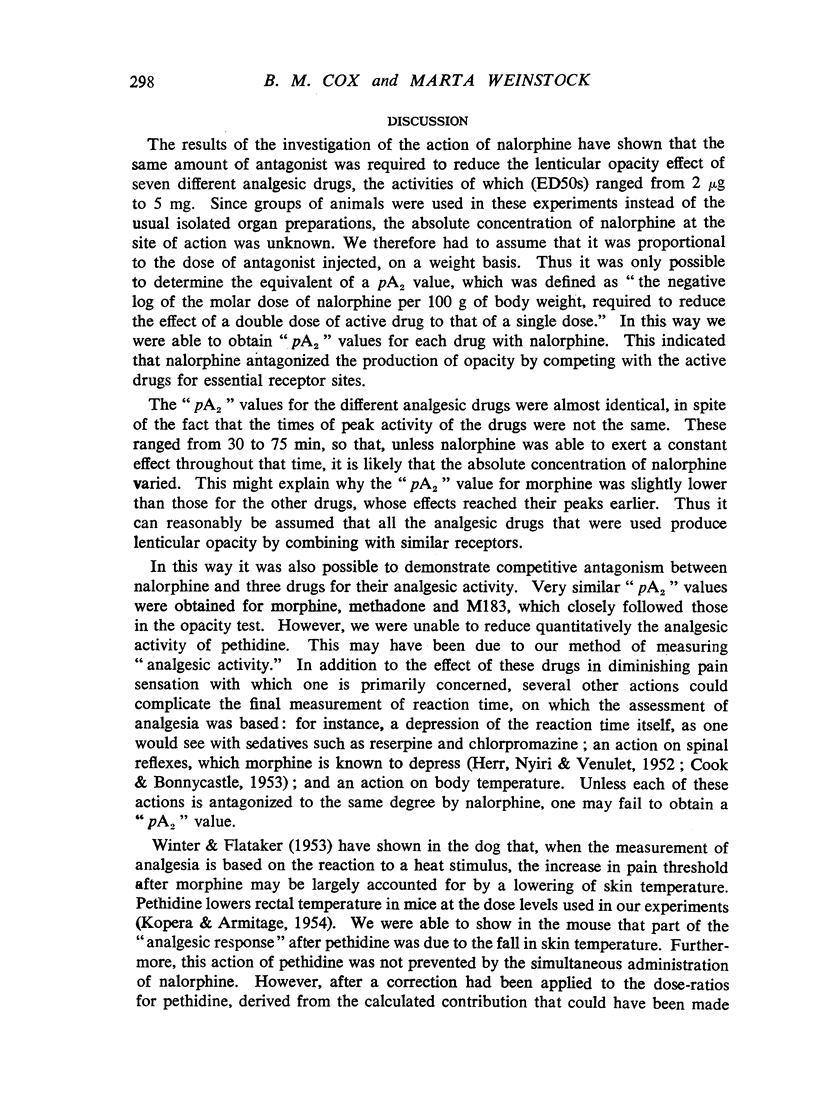
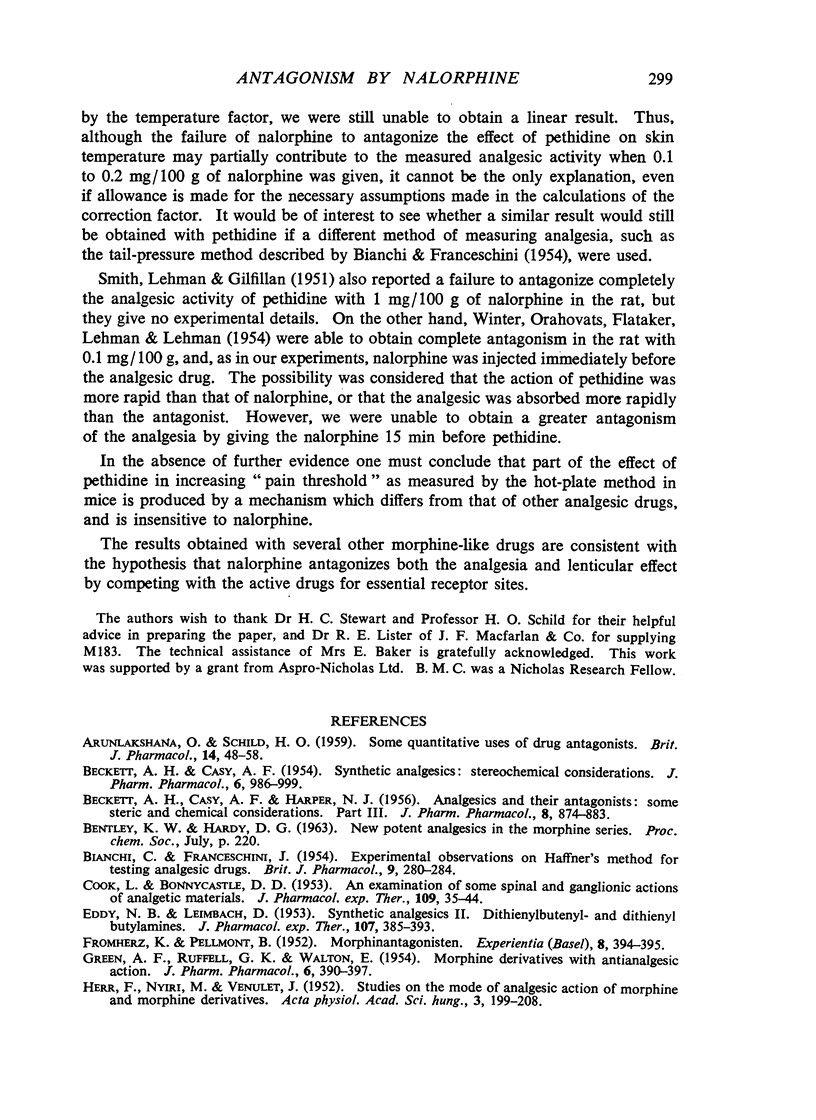

Selected References
These references are in PubMed. This may not be the complete list of references from this article.
- ARUNLAKSHANA O., SCHILD H. O. Some quantitative uses of drug antagonists. Br J Pharmacol Chemother. 1959 Mar;14(1):48–58. doi: 10.1111/j.1476-5381.1959.tb00928.x. [DOI] [PMC free article] [PubMed] [Google Scholar]
- BECKETT A. H., CASY A. F., HARPER N. J. Analgesics and their antagonists: some steric and chemical considerations. III. The influence of the basic group on the biological response. J Pharm Pharmacol. 1956 Nov;8(11):874-83; discussion, 883-4. [PubMed] [Google Scholar]
- BECKETT A. H., CASY A. F. Synthetic analgesics: stereochemical considerations. J Pharm Pharmacol. 1954 Dec;6(12):986–1001. doi: 10.1111/j.2042-7158.1954.tb11033.x. [DOI] [PubMed] [Google Scholar]
- BIANCHI C., FRANCESCHINI J. Experimental observations on Haffner's method for testing analgesic drugs. Br J Pharmacol Chemother. 1954 Sep;9(3):280–284. doi: 10.1111/j.1476-5381.1954.tb01681.x. [DOI] [PMC free article] [PubMed] [Google Scholar]
- COOK L., BONNYCASTLE D. D. An examination of some spinal and ganglionic actions of analgetic materials. J Pharmacol Exp Ther. 1953 Sep;109(1):35–44. [PubMed] [Google Scholar]
- EDDY N. B., LEIMBACH D. Synthetic analgesics. II. Dithienylbutenyl- and dithienylbutylamines. J Pharmacol Exp Ther. 1953 Mar;107(3):385–393. [PubMed] [Google Scholar]
- FROMHERZ K., PELLMONT B. Morphinantagonisten. Experientia. 1952 Oct 15;8(10):394–395. doi: 10.1007/BF02176207. [DOI] [PubMed] [Google Scholar]
- GREEN A. F., RUFFELL G. K., WALTON E. Morphine derivatives with antianalgesic action. J Pharm Pharmacol. 1954 Jun;6(6):390–397. doi: 10.1111/j.2042-7158.1954.tb10960.x. [DOI] [PubMed] [Google Scholar]
- HERR F., NYIRI M., VENULET J. Studies on the mode of analgesic action of morphine and morphine derivatives. Acta Physiol Acad Sci Hung. 1952;3(1):199–208. [PubMed] [Google Scholar]
- JANSSEN P. A., JAGENEAU A. H. A new series of potent analgesics: dextro 2:2-diphenyl-3-methyl-4-morpholino-butyrylpyrrolidine and related amides. I. Chemical structure and pharmacological activity. J Pharm Pharmacol. 1957 Jun;9(6):381–400. [PubMed] [Google Scholar]
- KOPERA J., ARMITAGE A. K. Comparison of some pharmacological properties of chlorpromazine, promethazine, and pethidine. Br J Pharmacol Chemother. 1954 Dec;9(4):392–401. doi: 10.1111/j.1476-5381.1954.tb00851.x. [DOI] [PMC free article] [PubMed] [Google Scholar]
- LANDMESSER C. M., COBB S., CONVERSE J. G. Effects of N-allylnormorphine upon the respiratory depression due to morphine in anesthetized man with studies on the respiratory response to carbon dioxide. Anesthesiology. 1953 Nov;14(6):535–549. doi: 10.1097/00000542-195311000-00001. [DOI] [PubMed] [Google Scholar]
- LASAGNA L. Nalorphine (n-allylnormorphine); practical and theoretical considerations. AMA Arch Intern Med. 1954 Oct;94(4):532–558. doi: 10.1001/archinte.1954.00250040024004. [DOI] [PubMed] [Google Scholar]
- SCHILD H. O. Drug antagonism and pAx. Pharmacol Rev. 1957 Jun;9(2):242–246. [PubMed] [Google Scholar]
- SEIBERT R. A., HUGGINS R. A. Conjugation of N-allylnormorphine by liver slices. Proc Soc Exp Biol Med. 1953 Mar;82(3):518–519. doi: 10.3181/00379727-82-20165. [DOI] [PubMed] [Google Scholar]
- WEINSTOCK M., STEWART H. C., BUTTERWORTH K. R. Lenticular effect in mice of some morphine-like drugs. Nature. 1958 Nov 29;182(4648):1519–1520. doi: 10.1038/1821519a0. [DOI] [PubMed] [Google Scholar]
- WEINSTOCK M. Similarly between receptors responsible for the production of analgesia and lenticular opacity. Br J Pharmacol Chemother. 1961 Dec;17:433–441. doi: 10.1111/j.1476-5381.1961.tb01130.x. [DOI] [PMC free article] [PubMed] [Google Scholar]
- WINTER C. A., FLATAKER L. The relationship between skin temperature and the effect of morphine upon the response to thermal stimuli in the albino rat and the dog. J Pharmacol Exp Ther. 1953 Oct;109(2):183–188. [PubMed] [Google Scholar]
- WINTER C. A., ORAHOVATS P. D., FLATAKER L., LEHMAN E. G., LEHMAN J. T. Studies on the pharmacology of N-allylnormorphine. J Pharmacol Exp Ther. 1954 Jun;111(2):152–160. [PubMed] [Google Scholar]


